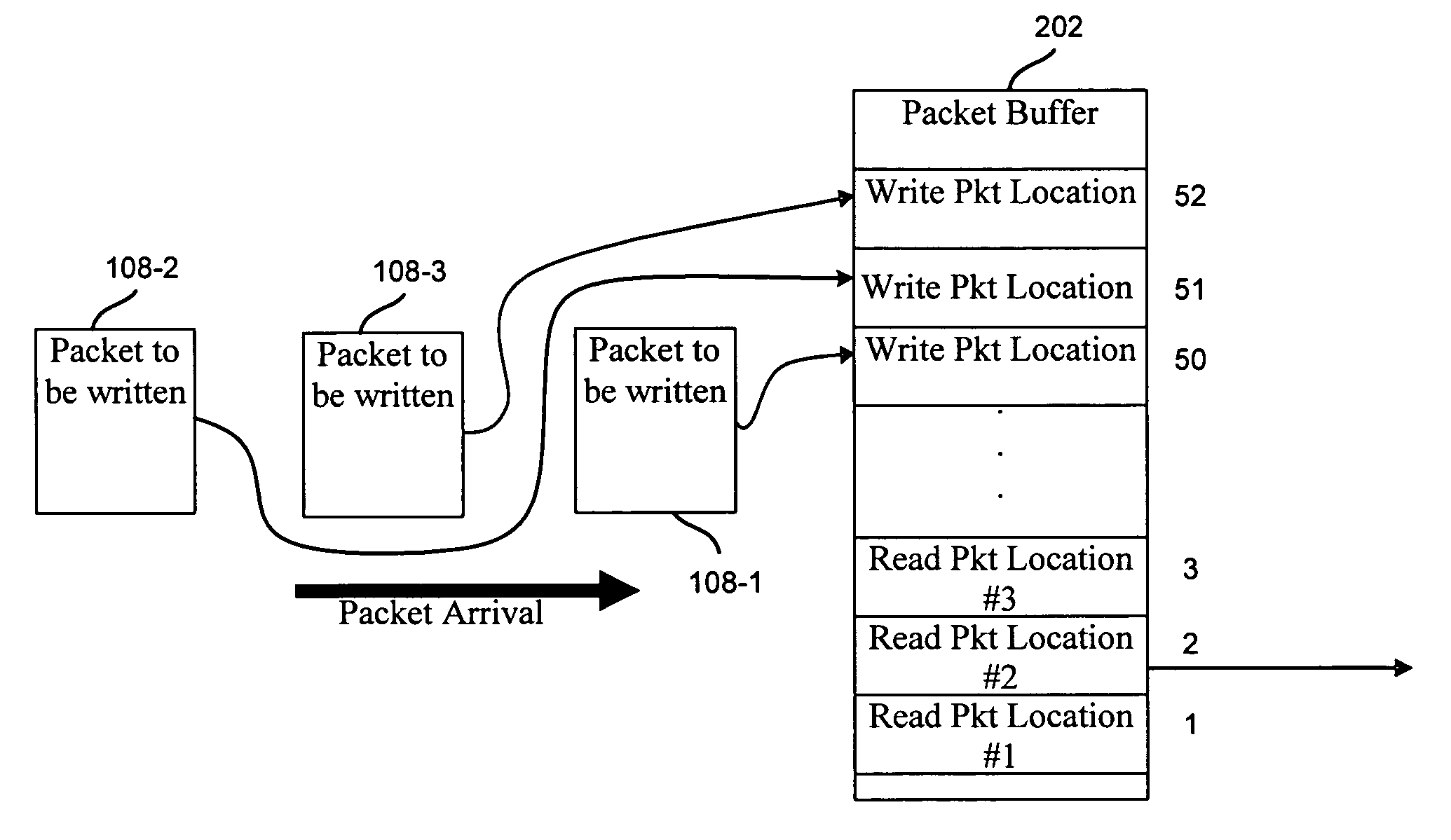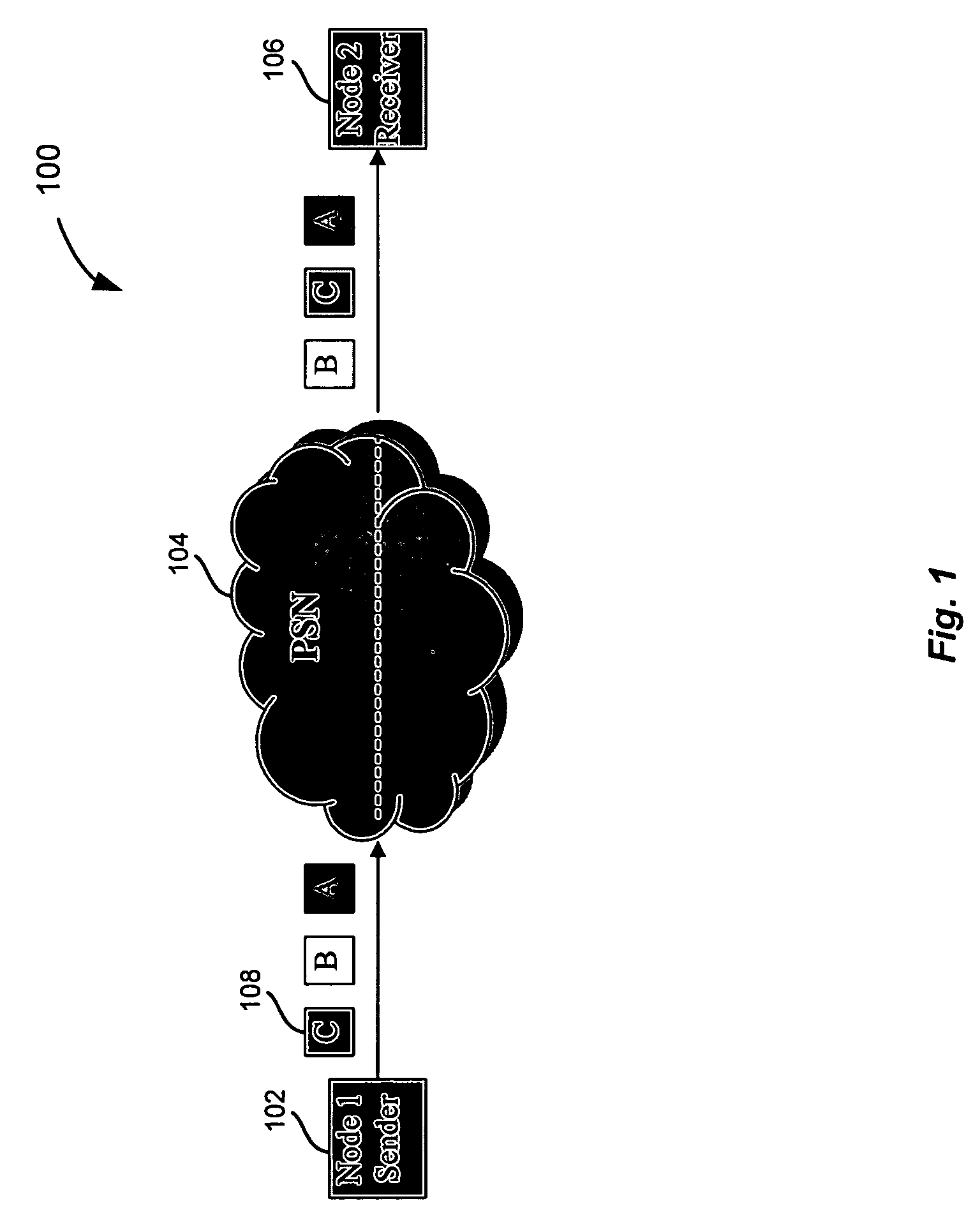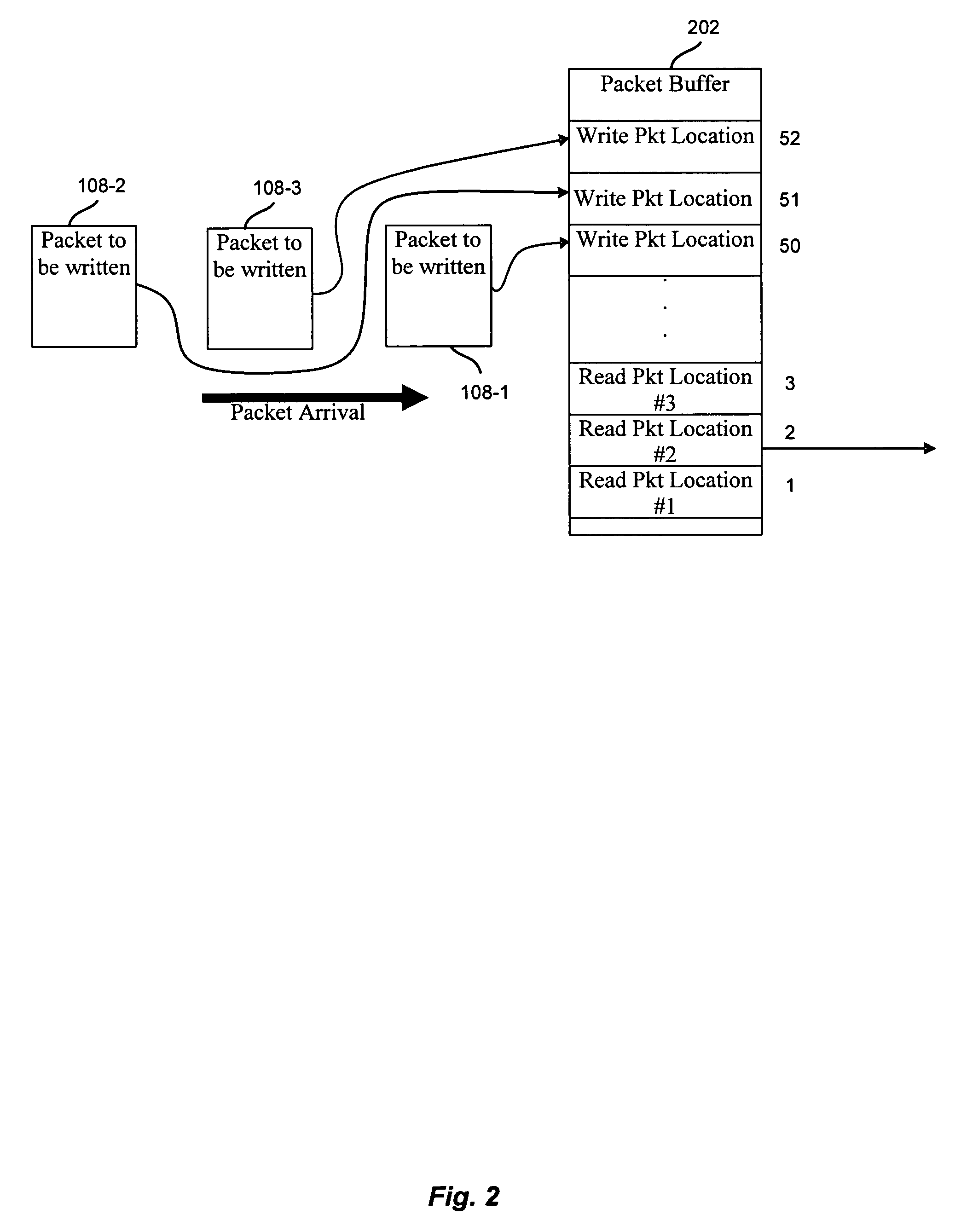Passive packet re-ordering and packet loss detection
a packet loss detection and packet reordering technology, applied in the field of telecommunications systems, can solve problems such as the inability of order to process packets
- Summary
- Abstract
- Description
- Claims
- Application Information
AI Technical Summary
Problems solved by technology
Method used
Image
Examples
Embodiment Construction
[0018]FIG. 1 depicts a system 100 for reordering packets according to one embodiment of the present invention. As shown, system 100 includes a sender node 102, a network 104, and a receiver node 106. Packets 108 are sent from sender node 102 through network 104 to receiver node 106. Although sender node 102 and receiver node 106 are shown, it will be understood that any number of sender nodes 102 and receiver nodes 106 may be included in system 100.
[0019]Packets 108 may include any data sent through network 104. In one embodiment, a file of data may be broken into chucks of data referred to as packets. The packets may be sent through network 104 in a communication between sender node 102 and receiver node 106. A communication may be any communication of a number of packets. The communication may be a streaming flow of packets. For example, the packets may include information for a streaming video, streaming audio, etc. In another embodiment, the packets may be sent in a communicatio...
PUM
 Login to View More
Login to View More Abstract
Description
Claims
Application Information
 Login to View More
Login to View More - R&D
- Intellectual Property
- Life Sciences
- Materials
- Tech Scout
- Unparalleled Data Quality
- Higher Quality Content
- 60% Fewer Hallucinations
Browse by: Latest US Patents, China's latest patents, Technical Efficacy Thesaurus, Application Domain, Technology Topic, Popular Technical Reports.
© 2025 PatSnap. All rights reserved.Legal|Privacy policy|Modern Slavery Act Transparency Statement|Sitemap|About US| Contact US: help@patsnap.com



